Cate Haste: Passionate Spirit: The Life of Alma Mahler
by Jennifer Bryce
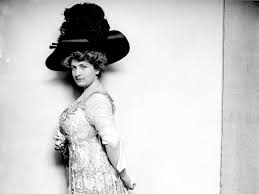
Alma Mahler
My introduction to Alma Mahler, at the age of about fifteen, was through a World War II era publication by Alma, entitled Gustav Mahler: Memories and Letters, translated by Basil Creighton. The book had been produced ‘in complete conformity with economy standards’. My aunt had acquired it in 1948 through a book club and when, many years later, she knew that I was interested in music, she passed it on to me. I’d vaguely heard of Mahler. Didn’t like his heavy music. The book, largely an appreciation of Gustav Mahler with some letters at the end, appeared to have been written by a devoted wife, with no suggestion of the life of dalliance that she was probably still leading at the time of publication.
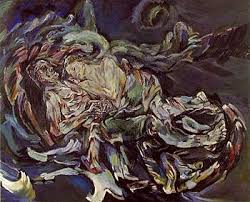
Kokoschka’s painting, Bride of the Wind, dedicated to Alma Mahler
Next, many, many years later, I saw Bruce Beresford’s film Bride of the Wind — the title referring to a painting by Oskar Kokoschka (one of Alma’s many lovers) that he dedicated to Alma.
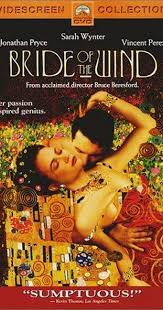
I was almost obsessed by that movie. For me it conveyed the belle epoque of early 20th century Vienna — the exciting discoveries, the flourishing arts, and most importantly it told me a great deal more about Alma Mahler — dwelling on the devastation for her and Gustav on the death of their daughter and, significantly, driving home the fact that when they agreed to marry, Gustav insisted that Alma cease her own musical composition (which was a driving part of her life). This demand seems outrageous today and critics have considered that Alma’s composing can’t have meant a great deal to her. However, she said that she carried her own songs around inside her ‘as if in a coffin’. Particularly at that time there were no role models of female composers and maybe she assumed that her own efforts could amount to no more than some gentile accomplishment.The film ends, well after the death of Gustav, with a concert of Alma’s own works.
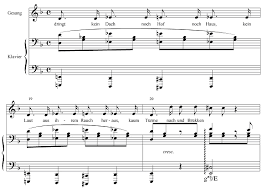
One of Alma Mahler’s compositions
By the time of her death in 1964, Alma Mahler had a reputation as a self-serving, narcissistic gold-digger, who flung herself at many powerful male figures in the arts. It is now interesting to examine her life from a distance and to evaluate it in its contemporary context. A recently published book by Cate Haste provides a detailed and largely sympathetic account of Alma Mahler’s life.
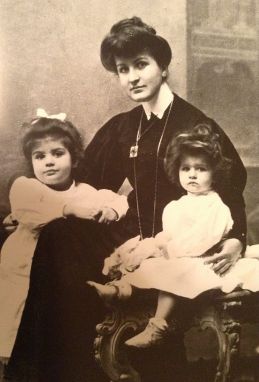
Alma with her two daughters before Maria’s death in 1907
Alma had huge admiration for her father, the artist Emil Schindler, who died when she was young. She was used to the artistic wealth of early 20th century Vienna. My own belief is that Alma, perhaps unconsciously, saw Gustav as a replacement for her recently deceased father. Maybe because she couldn’t fulfil her life through composition, Alma came to define her life through love – and the list of her lovers is long. Was it from a lack of fulfilment? Artists, such as Klimt, Kokoschka, the architect Gropius (whom she married), ultimately the writer Werfel (who was a best seller in his day). Sometimes, it seems to me, her diaries (quoted in Haste’s book) read like those of a teenager: do I really love him? In the foreword, Haste says that Alma was ‘untrammelled by convention’ (page x) – her liaisons were often wild and it seems she was quite open about her philandering and adultery. In many ways it was a life of peaks and troughs: three of her four children died (Bereford’s film concentrates on her life while Mahler was alive), and there are many descriptions of times when Alma was driven to her bed for long periods of depression. She seems to have been obsessed by her own allure – later in life she was described as ‘an extravagantly festooned battleship’ (page 261) and – more unkind – ‘her figure a bag of potatoes’ (page 286) and ‘a bloated Valkyrie’ who ‘drank like a fish’ (page 353).
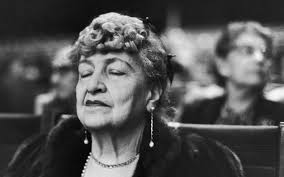
the ‘extravagantly festooned battleship’
For most of her life Alma seems to have had plenty of money. After a horrifying escape from Europe, over the Pyrenees, during World War II, Alma and third husband Franz Werfel ended up in the US and were soon holding salons with their friends from Europe. Alma must have been well read – at one time she is described as packing up 10,000 books. However, although many of her friends were Jewish, she was unforgivably anti-Semitic.
She is known as Alma Mahler – Mahler was her first husband. She also married Walter Gropius, the architect and writer Franz Werfel. But in the end, it seems, she wanted to be remembered through her connection with Mahler.
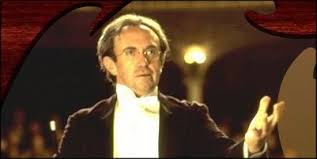
Jonathan Pryce playing Mahler in Bride of the Wind
Postlude:
My friend Sally has just reminded me of Tom Lehrer’s brilliantly irreverent song about Alma Mahler: https://www.youtube.com/watch?v=QL6KgbrGSKQ
Thanks very much, Sally!
How fascinating Jenny. What a life of tragedy and excess. Thank you for posting this. Certainly a larger than life character.
LikeLike
Yes — an interesting study — some things about her, such as the anti-semitism cannot be forgiven.
LikeLike
Terrific review Jenny. I don’t seem to have logon details. Never heard of Beresford’s film – loved the photos and reproduction of marvellous paining. Tops!
Luv
Ange
LikeLike
Thanks, Ange. The film had a very short run in Australia — I’ve only seen it on DVD.
LikeLike
Fascinating Jenny. Do you like Mahler any better now?
LikeLike
Oh yes! But I was quite old when I came to appreciate his music — I love it now. My oboe teacher explained that Mahler would capture the sounds around him and insert them into his grand works — things such as a little street band. I’m unable to sum up such great music in a few words, but it often takes me to that time on the brink of our modern world — just before WWI. And the music written in response to the death of his daughter is sublime.
LikeLike
I love some of what I’ve heard of Mahler to the point of tears. Maybe it was part of his commemoration for his daughter. How tragic.
LikeLike